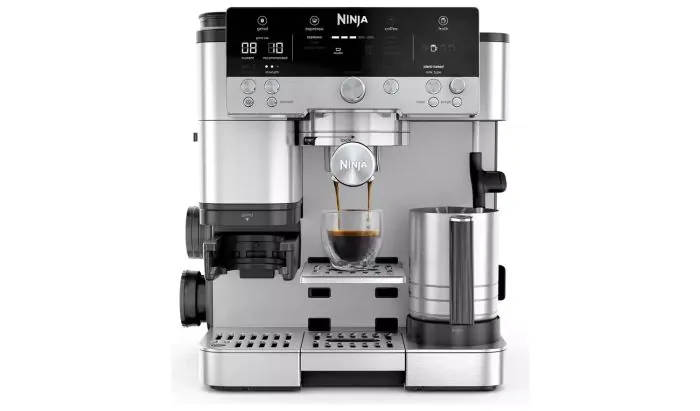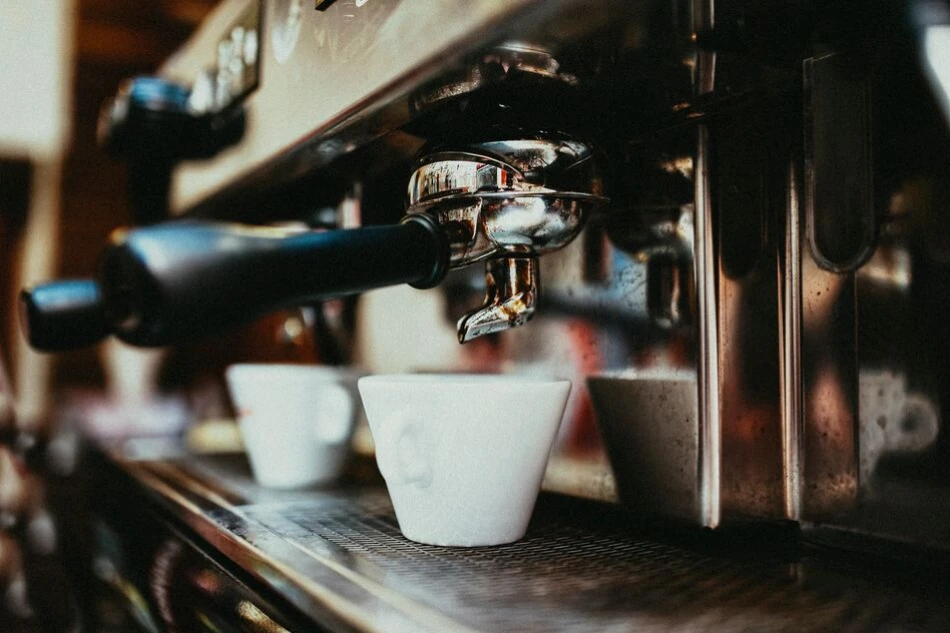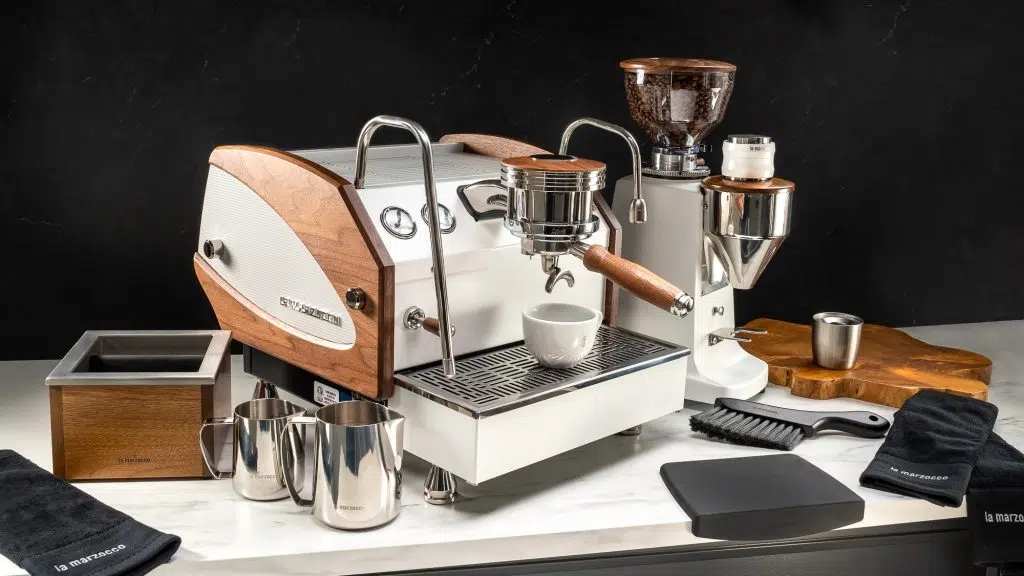Coffee is more than just a morning pick-me-up; for many of us, it’s a ritual. From the aroma of freshly ground beans to the rich crema atop a well-pulled espresso shot, every step of the coffee-making process can be a source of pleasure and comfort. But with such a dizzying array of coffee machines on the market—drip brewers, espresso machines, single-serve pods, bean-to-cup models, and more—how do you decide which one best suits your lifestyle and palate?
In this in-depth guide, we’ll walk you through the essential factors to consider before investing in a coffee machine. We’ll explore the different types of brewers available, highlight key features to look for, and offer tips on aligning your machine with your coffee preferences, budget, and maintenance expectations. By the end, you’ll be equipped to pick the perfect coffee machine for consistent, satisfying cups at home.
1. Understand Your Coffee Preferences
Taste and Strength
First, reflect on the type of coffee you enjoy most:
- Do you prefer bold, concentrated espresso shots, cappuccinos, or lattes?
- Or are you a fan of standard drip coffee, with a smoother flavor profile and bigger serving sizes?
Your preference for milky beverages (lattes, cappuccinos) or strong black coffee (espresso, Americano) will determine which machine style makes the most sense.
Volume and Frequency
Are you a one-cup-a-day drinker who needs a quick morning jolt, or do you brew multiple cups throughout the day? If you regularly entertain guests or have a family of coffee lovers at home, you’ll want a machine that can handle higher volumes efficiently. Conversely, single-serve machines can be ideal for those who value convenience and only need one or two cups daily.

2. Types of Coffee Machines
a) Drip Coffee Makers
Drip machines are a staple in many households. They’re easy to use, relatively affordable, and can brew larger quantities at once—often 8 to 12 cups. They work by heating water and dripping it over ground coffee in a filter, and the brew then collects in a carafe.
- Pros:
- Straightforward operation.
- Ideal for serving multiple cups.
- Typically cost-effective, with many options under $100.
- Cons:
- Limited versatility—no built-in espresso option.
- Must brew a batch at a time (though you can sometimes find smaller 4-cup or single-serve drip models).
Drip makers are perfect if you enjoy a steady supply of filter coffee throughout the morning or if you frequently serve multiple cups (e.g., family breakfasts, small gatherings).
b) Single-Serve Pod or Capsule Machines
Brands like Keurig and Nespresso popularized single-serve coffee pod machines. They rely on pre-packaged pods or capsules, offering convenience: just pop in a pod, push a button, and have coffee in under a minute.
- Pros:
- Minimal cleanup—no loose grounds to dispose of, just the used pod.
- Quick brewing for one cup at a time.
- Wide variety of flavors and roast styles.
- Cons:
- Pods can be pricier per cup than buying beans or ground coffee in bulk.
- Environmental concerns about disposable pods.
- Limited customizability: you’re reliant on available pod flavors.
Single-serve machines excel in speed and simplicity. If you value convenience over customization, or if you rarely brew more than one or two cups at a time, these could be a great fit.
c) Espresso Machines
For coffee aficionados who prioritize authenticity, espresso machines are the go-to. They force pressurized hot water through finely ground coffee, creating a concentrated shot with a distinctive layer of crema on top.
Espresso machines range from manual (lever) designs to super-automatic bean-to-cup machines:
- Manual (Lever) Espresso Machines: You control the pressure by pushing/pulling a lever. This can yield incredible results if you master the technique, but they’re challenging and time-intensive.
- Semi-Automatic Machines: You grind and tamp coffee yourself, but the machine manages water temperature and pressure. You control extraction time by flipping a switch on/off, making it easier than fully manual.
- Automatic Machines: Similar to semi-automatic, but they stop extraction automatically after a programmed volume. You still handle grinding, tamping, and frothing (unless you have an attached steam wand).
- Super-Automatic/Bean-to-Cup: The machine does everything—grinds beans, tamps, brews espresso, and can froth milk automatically. These are the easiest but also the priciest.
- Pros:
- Authentic espresso flavor and aroma.
- Ability to create milk-based drinks (latte, cappuccino, macchiato, etc.) via a steam wand or automated frother.
- Some models offer a high level of automation.
- Cons:
- Generally more expensive than drip or single-serve makers.
- Some models require learning curve (especially manual/semi-auto).
- Cleaning and maintenance can be more involved.
If you’re passionate about espresso and want café-style beverages at home, an espresso machine is your best bet. Decide how hands-on you want to be, from the artistry of pulling manual shots to the convenience of a super-automatic machine.
d) French Press, Pour-Over, and Other Manual Options
Though not “machines” in the conventional sense, manual brewing methods like French press, pour-over drippers, or AeroPress remain popular for their simplicity and control over extraction. If you enjoy tinkering with grind size, water temperature, and brew time, these manual methods can produce excellent coffee for a lower upfront cost. However, they can be less convenient if you regularly need multiple cups quickly or prefer push-button operation.
3. Key Features to Consider
a) Grinder Integration
Some coffee machines offer a built-in grinder (especially super-automatic espresso machines and certain drip brewers labeled “grind and brew”). This ensures freshly ground coffee for optimal flavor without needing a separate grinder. However:
- Built-in grinders add cost and complexity.
- If you already own a high-quality standalone grinder, or you use pre-ground coffee, paying extra for an integrated grinder might not be necessary.
b) Milk Frothing Capability
If you enjoy lattes, cappuccinos, or macchiatos, you’ll want a machine that can froth or steam milk:
- Steam Wand: Common in manual or semi-automatic espresso machines. It requires some skill to create microfoam, but offers greater control.
- Automatic Frother: Some machines can froth milk at the push of a button, either via an attached milk reservoir or through a separate container. Super-automatics often incorporate this feature.
c) Programmability and Customization
Certain coffee machines allow you to adjust water volume, temperature, brew strength, or other parameters:
- Brew Strength Settings: Lets you choose a bolder or milder cup, especially in drip machines or single-serve systems.
- Temperature Control: Some advanced espresso machines let you fine-tune brew temperature for consistent shots. Drip makers might also have a variable temperature setting for different roast profiles.
- Timed Brewing / Auto-On: Handy for drip machines—wake up to a freshly brewed pot.
These features enhance convenience and help tailor coffee to your taste preferences.
d) Water Reservoir and Filter
Size and placement of the water reservoir affects how frequently you refill and how easily you can do so. Some coffee makers have a removable reservoir, simplifying cleaning and refilling.
Consider water filtration too—many machines have built-in filters to reduce chlorine or impurities, which can improve flavor and prolong the machine’s lifespan by reducing scale build-up. Note that you’ll need to replace these filters periodically.
e) Build Quality and Aesthetics
Stainless steel machines often feel sturdier and more premium than plastic ones. While aesthetics might not impact coffee taste, you’ll want a machine that aligns with your kitchen’s decor and fits the available space.
Check reviews or look for brand reputations regarding durability—sturdy internal components (pumps, heating elements) can mean the difference between a short-lived machine and a lasting investment.

4. Budget Considerations
Coffee machines can cost anywhere from $20 for a basic manual pour-over dripper to $2,000+ for a high-end super-automatic espresso machine. Setting a budget upfront helps narrow your choices. Keep in mind potential additional costs:
- Ongoing expenses: Pods for single-serve machines, filters, or coffee beans.
- Maintenance and repair: Espresso machines may need periodic descaling, new group head gaskets, or professional servicing.
- Add-ons: Milk frothing accessories, tampers, pitchers, or even external grinders if your machine doesn’t have one built in.
Weigh how critical coffee quality and convenience are to you. If you’re fine with a standard cup of drip coffee, you needn’t break the bank. But if you want café-caliber espresso and cappuccinos daily, a higher-end setup may be worthwhile.
5. Maintenance and Cleaning
a) Frequency of Cleaning
All coffee machines require cleaning to maintain flavor and efficiency. This might include daily rinsing of parts that come in contact with milk or grounds, weekly deep cleans, and monthly descaling:
- Drip Makers: Usually need the carafe and filter basket rinsed or washed. Descaling with vinegar or a specialized product is recommended every 1–3 months.
- Single-Serve: The needle/puncture system and drip tray should be cleaned periodically to avoid buildup. Descale when prompted or every few months.
- Espresso Machines: More intensive. The steam wand, group head, and drip tray often require daily attention. A backflush and thorough descaling schedule is vital, especially for water with higher mineral content.
b) Ease of Disassembly
Look for machines with removable parts (brew group, drip tray, water reservoir) to simplify cleaning. Some bean-to-cup or super-automatic models have removable brew units so you can rinse away coffee oils and residue easily. Models that are hard to dismantle may foster mold or stale coffee residue over time, undermining flavor and potentially causing mechanical issues.
c) Filter Replacement
If your machine uses water filters or milk system filters, factor in the cost and frequency of replacements. Proper filtration can improve taste and reduce scale formation, but ignoring these changes can hamper performance.
6. Space and Kitchen Layout
a) Counter Space
Coffee machines—particularly espresso machines with integrated grinders, large water tanks, or milk containers—can occupy substantial counter real estate. Carefully measure the space where you plan to place it, including overhead clearance if it has a hinged lid.
b) Electrical Requirements
Some high-wattage espresso machines need a dedicated circuit to ensure stable power supply without tripping breakers. Check the power requirements (120V vs. 240V, wattage rating) and ensure your kitchen can accommodate the machine’s demands.
c) Accessibility
A machine that must be frequently refilled or has top-loading water reservoirs must have enough overhead clearance for easy access. Also, consider how easy it is to remove the drip tray or grounds container if the machine is pushed against a wall or between cabinets.

7. Brand Reputation and Customer Support
With coffee machines, brand reputation can be a strong indicator of reliability, parts availability, and warranty coverage. Well-known coffee equipment manufacturers—like Breville, De’Longhi, Jura, Miele, Gaggia, or Keurig—often have recognized track records.
- Warranty: Check the length (1-year, 2-year, etc.) and what it covers (pump, heating element, electronics).
- Customer Support: If issues arise, does the brand have local service centers or responsive phone/email support?
- Parts and Accessories: Are filters, gaskets, and other consumables easy to find?
Reading user reviews and professional coffee blog recommendations can help you gauge common pain points (e.g., “machine leaks after 6 months,” “milk frother always clogs,” “excellent support replaced my unit quickly,” etc.).
8. Specialized Features for Coffee Enthusiasts
a) Pressure Gauge and PID Controller
Some higher-end espresso machines include a pressure gauge to show brew pressure, which can help fine-tune extraction. A PID (Proportional-Integral-Derivative) temperature controller maintains stable water temperature, crucial for optimal espresso extraction. If you’re serious about espresso craft, these features can make a significant difference.
b) Dual Boiler or Heat Exchange Systems
Espresso machines with dual boilers (one for steaming milk, one for brewing) or a heat exchange design allow simultaneous steaming and brewing, speeding up the latte-making process. This matters if you frequently prepare multiple milk-based drinks back-to-back.
c) Bean Hoppers and Bypass Doser
Super-automatic machines often have built-in bean hoppers. Some also provide a bypass doser, letting you use pre-ground coffee (e.g., decaf) without emptying the main hopper. This versatility can be handy for households with varying coffee preferences.
9. Environmental Considerations
a) Energy Consumption
Some coffee makers remain plugged in and keep water preheated (especially certain espresso machines with thermostatically controlled boilers). Check if the machine has an auto-off or power-saving mode. Single-serve pod machines can be energy-efficient for small volumes, while large espresso machines might draw more power overall.
b) Waste Generation
Pod machines generate waste from disposable capsules unless you opt for reusable pods or a brand that offers recycling programs. By contrast, machines that use ground coffee or beans produce mainly biodegradable waste (used grounds). If sustainability is a priority, consider these factors in your decision.
10. Taste Testing and Hands-On Trials
When possible, taste test coffee from different machine types in store demonstrations or at friends’ houses. The flavor, body, and aroma can vary significantly between drip brews, capsule pods, or espresso from a semi-automatic machine. Hands-on demos also let you gauge noise levels, user interface, and general ease of operation.
11. Balancing Convenience and Quality
In the coffee world, there’s often a trade-off:
- High convenience (pods, super-automatic espresso machines) can save time and reduce mess, but at higher cost per cup or initial investment.
- High involvement (manual or semi-automatic espresso, pour-over) can yield top-tier flavors with more control, but demands more skill and daily cleanup.
Consider your daily routine. If you’re frequently rushed, a push-button machine might ensure you actually enjoy coffee at home without feeling hassled. If you have the time and passion, you’ll likely relish the hands-on approach of measuring, grinding, and tamping for each cup.
12. Top Tips for Making the Final Decision
- Set a Realistic Budget: Factor in the machine’s purchase price, potential add-ons (like a grinder, accessories), and ongoing costs (filters, pods, beans).
- Match Machine Type to Coffee Preference: If you mostly want lattes, ensure easy milk frothing. If you love big pots for the family, a drip coffee maker might be best.
- Check Dimensions: Confirm you have enough space and easy access to water refills.
- Assess Maintenance: Are you willing to frequently clean filters, descale the system, or empty drip trays?
- Read Reviews and Warranties: Look for reliability, brand reputation, and customer service experiences.
- Consider Upgradability: If you start with a cheaper machine, you might upgrade soon if you outgrow its capabilities. Alternatively, investing in a higher-end machine from the get-go can be cost-effective in the long run.
13. Caring for Your Coffee Machine
Once you’ve chosen your machine, follow these care guidelines for best results:
- Use Fresh, Good-Quality Coffee: Beans or grounds should be used within a few weeks of roasting for optimal flavor. Store them in airtight containers, away from direct sunlight.
- Consistent Descaling: Mineral deposits (scale) in your machine can affect water flow and temperature. Use manufacturer-recommended descaling solutions or follow instructions with vinegar or citric acid solutions.
- Clean Milk Components Immediately: If your machine has a milk frother or steam wand, clean it soon after use to avoid dried or curdled milk residue.
- Replace Filters on Schedule: If your machine has water filters, track their lifespan to maintain water quality and machine health.
- Check Gaskets and O-Rings: For espresso machines, periodic inspection and replacement of worn rubber seals can prevent leaks and ensure stable pressure.

14. Future Trends: Smart Coffee Machines and Automation
As technology advances, more coffee machines incorporate smart features—from smartphone apps to voice assistants. You might see:
- Remote Start: Begin brewing from your phone without leaving bed.
- Recipe Customization: Save your favorite milk ratio, brew strength, and temperature settings in an app.
- Maintenance Alerts: Automatic notifications when it’s time to descale or replace filters.
While these features can be convenient, they often come at a premium. Decide if they truly enhance your day-to-day routine or if standard manual controls suffice.
15. Conclusion
Choosing the perfect coffee machine is ultimately about finding harmony between your coffee preferences, budget, and lifestyle. From the familiarity of drip coffee makers to the precision of espresso machines, or the effortless convenience of single-serve pods, there’s a brewer out there to suit every household. Reflect on whether you prefer speed and ease or hands-on craftsmanship—whether you need one cup at a time or enough for a crowd.
By considering key factors such as capacity, build quality, maintenance, and brand reputation, you can narrow down the overwhelming choices and arrive at a machine that consistently produces the type of coffee you love. While it can be tempting to jump straight to the most feature-packed or stylish model, focusing on your real needs ensures you’ll keep enjoying that first (and second) cup each day without regrets.
Whether you prioritize a quick morning fix or savor slow, artisanal espresso moments, the right coffee machine can make a world of difference in your daily routine. Take the time to research, test, and plan your purchase carefully. Your perfect cup—rich, aromatic, and just the way you like it—awaits.
